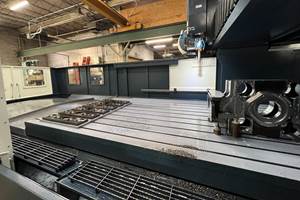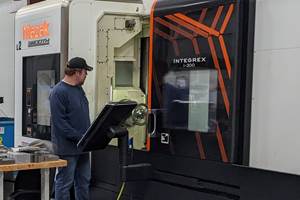Advanced CNC Milling and Drilling Quiz
A provider of machine shop training offers these questions for benchmarking metalworking knowledge.
Share






(Text updated February 4, 2019) Ryan Pohl of Praeco Skills developed this test to quickly evaluate students' knowledge of CNC milling and drilling and determine the level of instruction they need. What is your level of knowledge? Scroll down to read the questions and find an answer key or .
1. What is the maximum rpm you should run a holder if it is unbalanced in a V-tapered spindle?
Related Content
Inverted Milling Offers Power in a Compact Machine
To compete in terms of stability and horsepower, Modig’s recent IM-8 mill takes an unorthodox approach: positioning the spindle at the bottom of the work area.
Read MoreDN Solutions America Unveils Impressive Chicago Technical Center at IMTS 2024
New tech center is serving as a cutting-edge showroom and a technological hub for advanced machining applications.
Read MoreThree-Axis Bridge Mill Opens New Doors for Construction OEM
Different industries often require different machining priorities, a truism recently demonstrated by Barbco, an OEM of heavy-duty boring equipment that opened up new design possibilities by pivoting toward rigid, less complex machining centers.
Read More5 Tips for Running a Profitable Aerospace Shop
Aerospace machining is a demanding and competitive sector of manufacturing, but this shop demonstrates five ways to find aerospace success.
Read MoreRead Next
AMRs Are Moving Into Manufacturing: 4 Considerations for Implementation
AMRs can provide a flexible, easy-to-use automation platform so long as manufacturers choose a suitable task and prepare their facilities.
Read MoreMachine Shop MBA
Making Chips and ∏þ≈‚¬ ¡˘∫œ≤ are teaming up for a new podcast series called Machine Shop MBA—designed to help manufacturers measure their success against the industry’s best. Through the lens of the Top Shops benchmarking program, the series explores the KPIs that set high-performing shops apart, from machine utilization and first-pass yield to employee engagement and revenue per employee.
Read More

















